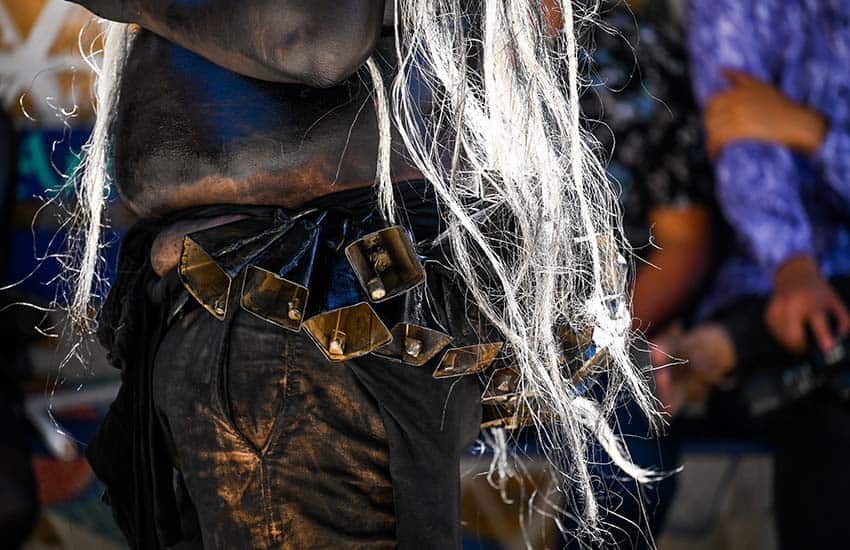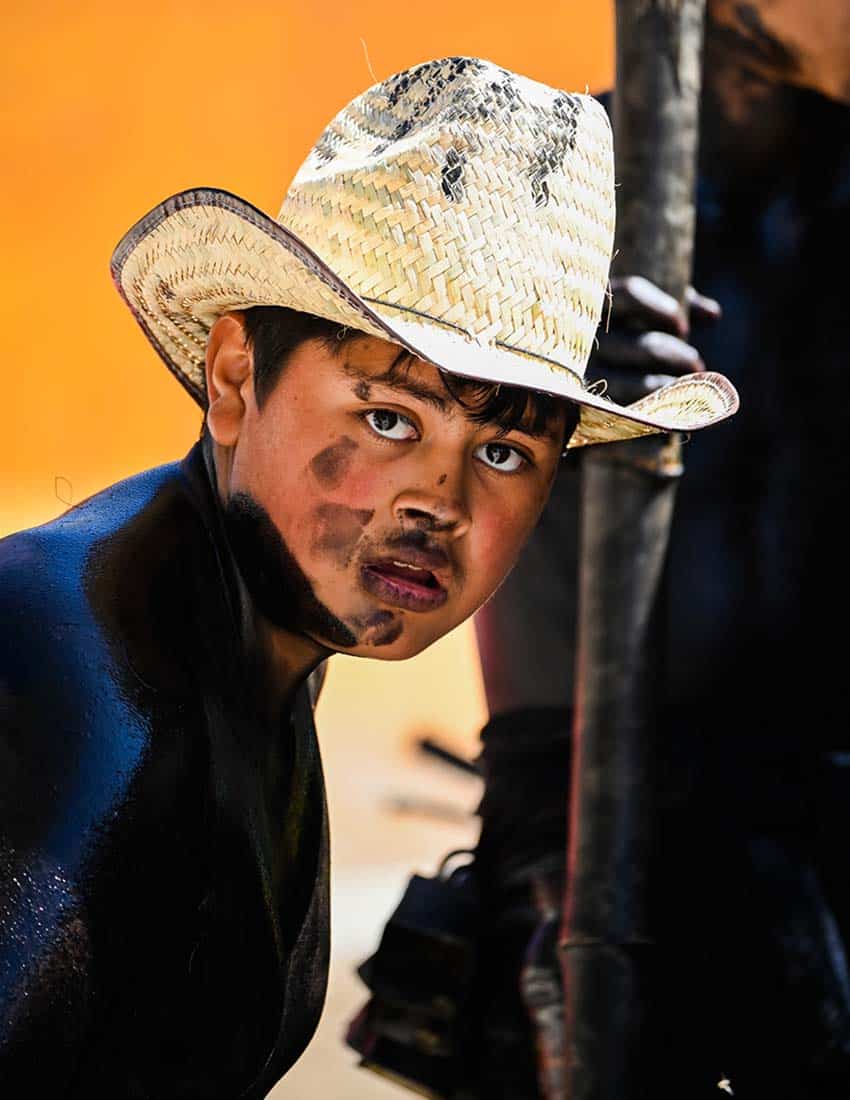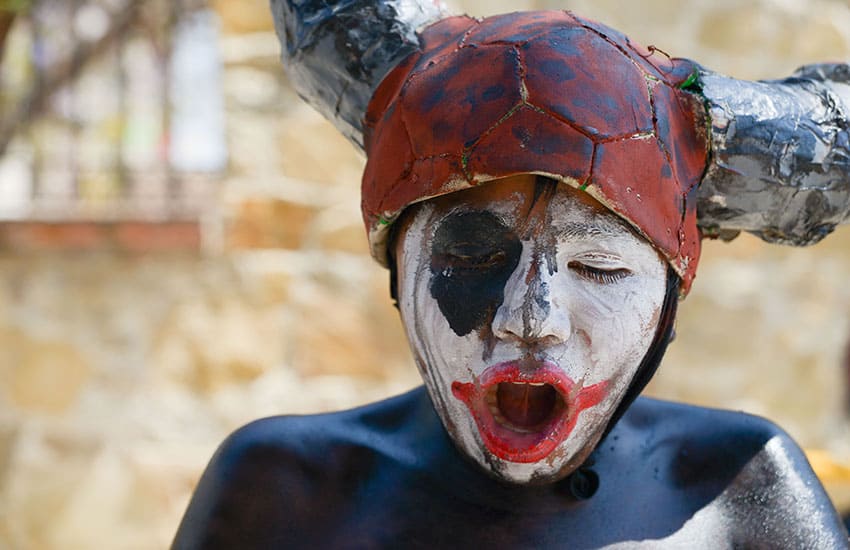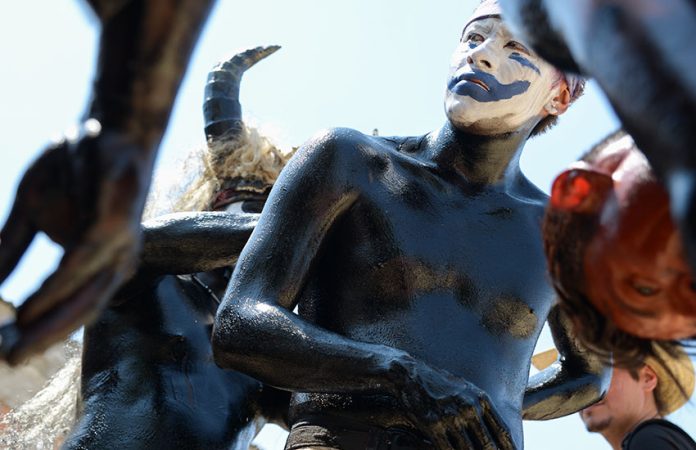San Martín Tilcajete, a vibrant town about an hour’s drive from Oaxaca City, is perhaps best known for its alebrijes — wooden artisan carvings of highly decorated creatures, both real and fantastical, meticulously painted in electric colors.
However, in the lead-up to Shrove Tuesday (also known as Fat Tuesday), the town is also known for its Carnaval celebrations, and a tradition known as the “Dance of the Devils,” in which revelers run through town in costume — their bodies covered in body paint to look macabre or otherworldly. Some wear grotesque-looking hand-made masks.
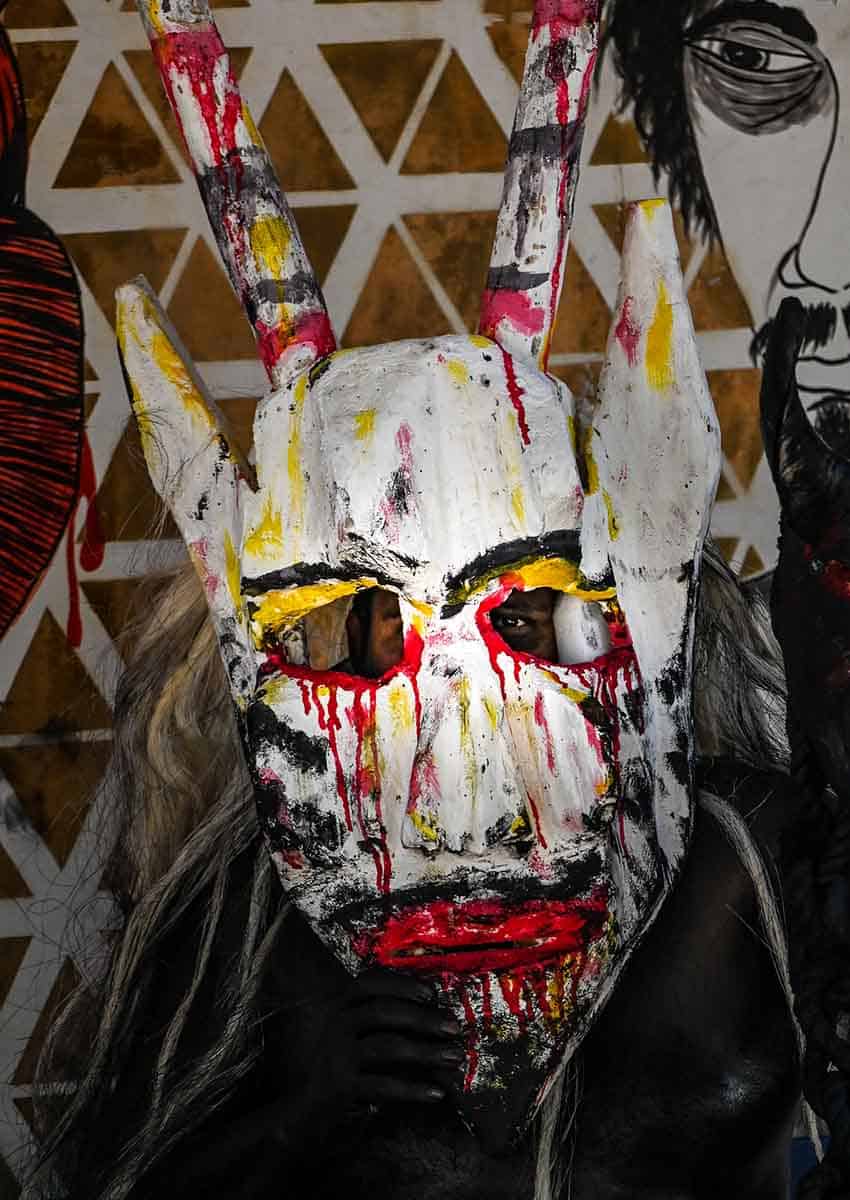
The dancers typically just wear shorts and cover the rest of their bodies in oil or paint. They paint their faces or wear masks with horns. If they don’t wear a mask, they will often use cow horns to allude to the devil aspect. They can paint themselves any color they choose, as long as it is striking.
There are three main colors used, however: black, representing the underworld; yellow, representing the earthly world; or red, representing infinity.
Everything about this local tradition is attached to Zapotec, pre-Hispanic beliefs.
The colors are prepared with different materials: those in black make their body paint using a mixture of carbon and oil; the yellow dye is made with yellow corn, earthen clay and cooking oil; the red color is prepared with brick dust mixed with oil.
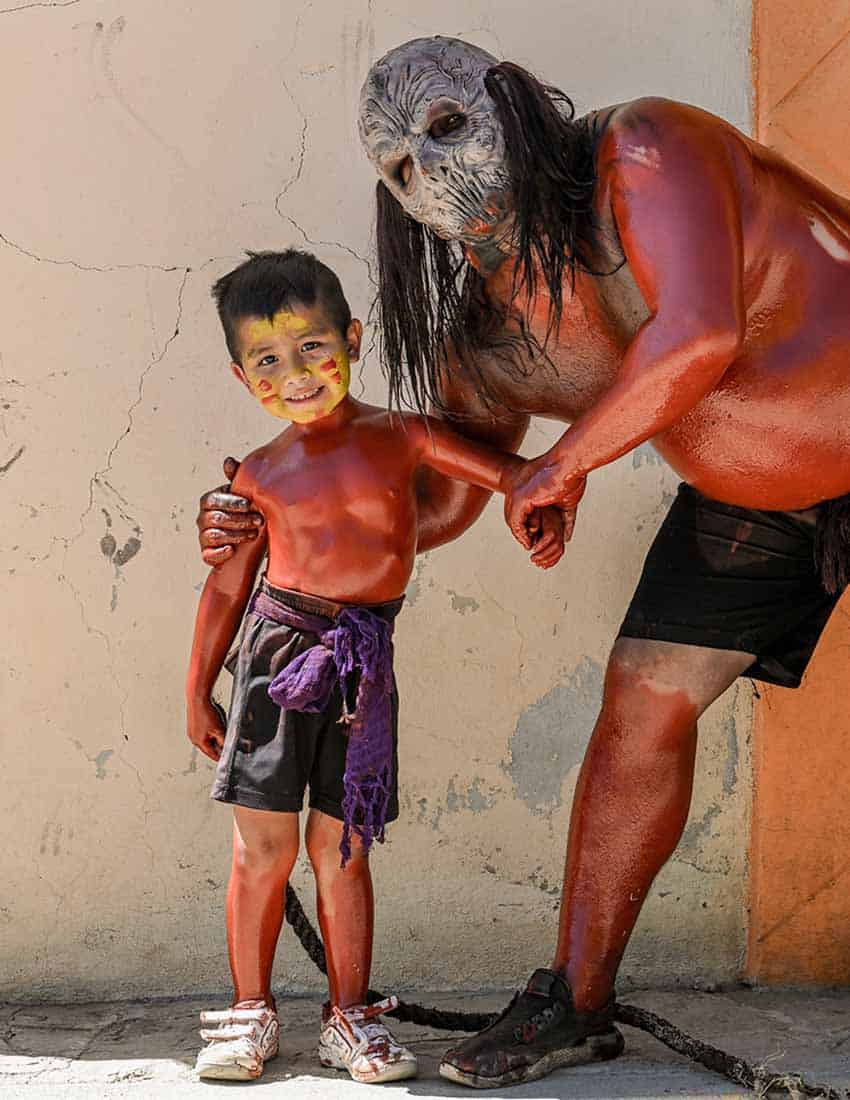
In earlier years, dancers would wear shells to shake and summon the community from their houses as they passed by. Nowadays, bells are more typical, making a distinctive rattle that can be heard all over town. Often the dancers will try and rub paint onto spectators, bringing them into the procession.
Originally, only San Martín’s males participated in the celebration. However, in the mid ‘90s, a woman disguised as a man broke this tradition, and since then, women have been part of the celebration, and now everyone is welcome to take part, whether they are from the town or not.
Although dancers are of all ages, most are young men who flirt with the girls and try to mark them with their body paint.
San Martín local Elías José Ángeles Ojeda, who produces mezcal, told me about this tradition’s history.
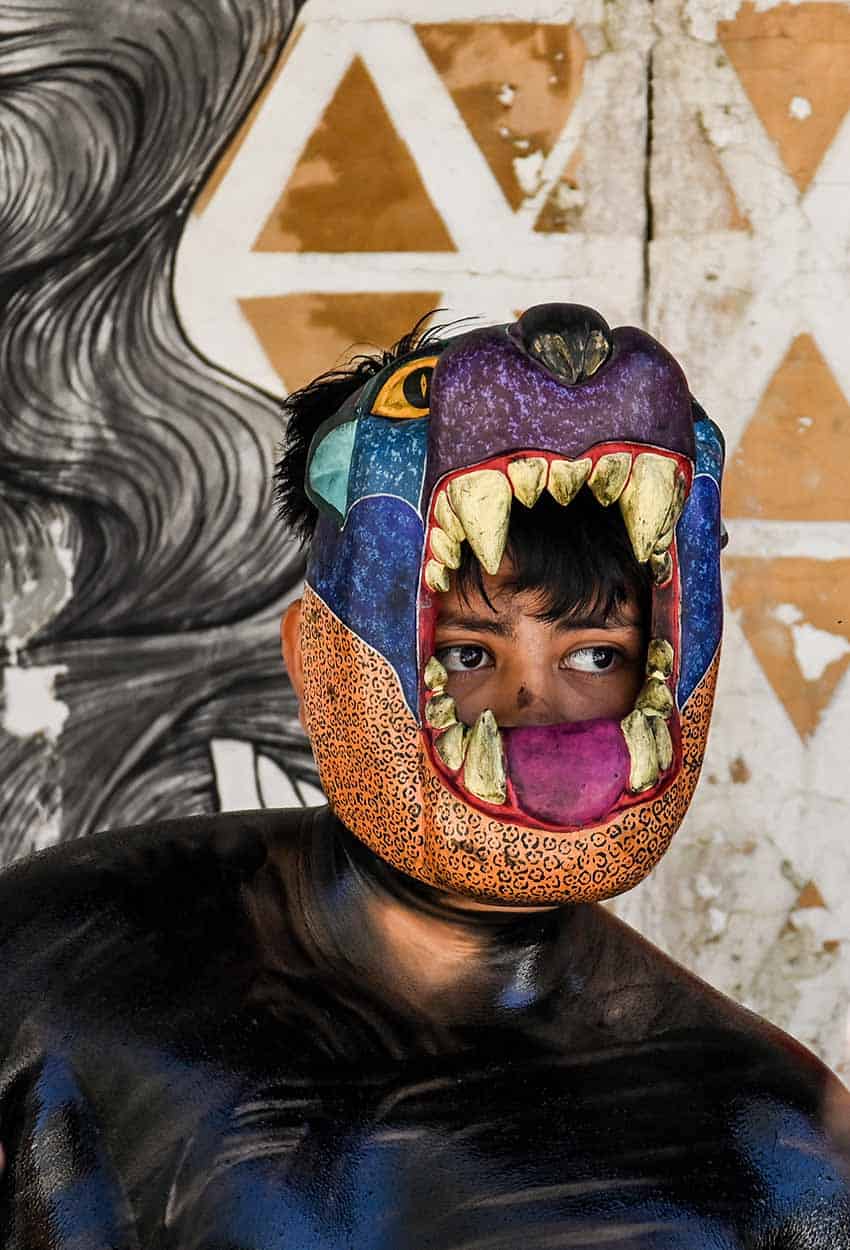
“When the Spanish arrived in Oaxaca, Zapotec communities defended themselves so as not to be subjected to Catholicism. They did not fight but thought that by doing dances and rituals they could ward off the friars.”
The Spaniards considered these dances to be “of the devil,” which is how the celebration got its name.
Ojeda also described how people today in San Martín believe in spirit animals. At birth, each person is assigned their protector animal. During Carnaval, you can see this belief represented in costumes: the necklaces and masks symbolize their spirit animals that can ward off evil beings and “defend themselves from being subjugated by Catholicism,” he explained.
These days, the community is primarily Catholic; after Carnaval festivities end, these dancers, and most other residents, will receive a cross of cenizas on their forehead to mark Ash Wednesday.
![]()
Festivities take place every Sunday from January leading up to Shrove Tuesday.
Anna Bruce is an award-winning British photojournalist based in Oaxaca, Mexico. Just some of the media outlets she has worked with include Vice, The Financial Times, Time Out, Huffington Post, The Times of London, the BBC and Sony TV. Find out more about her work at her website or visit her on social media on Instagram or on Facebook.

